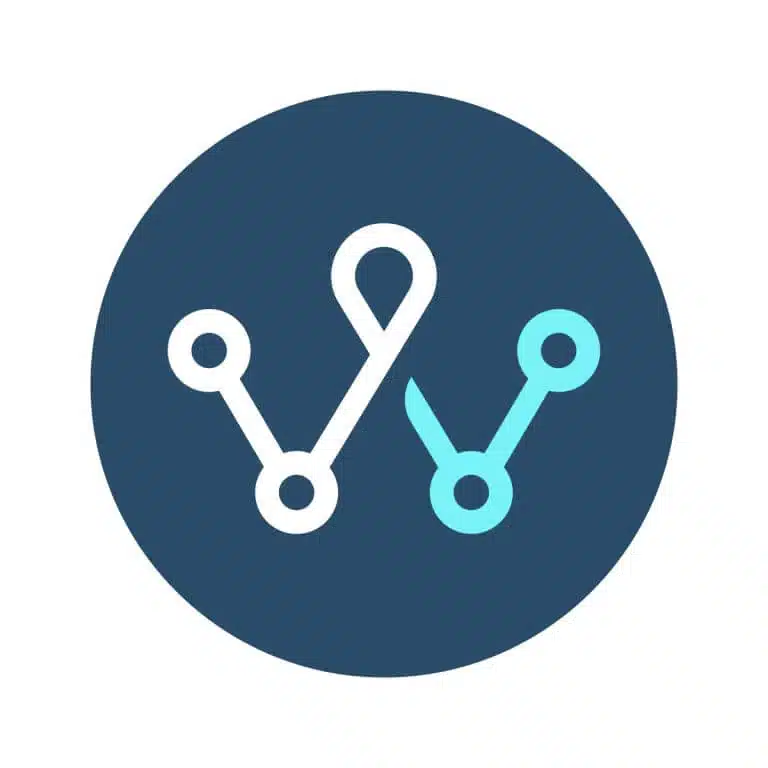Authored by: The WayPath CMS Team
In today’s turbulent times, the new battleground for business success is not product quality, brand recognition, or even customer service, but Customer Experience (CX). And smart organizations understand that one of the most enduring ways to consistently deliver great CX is through content. Content is now the new “currency” for business.
Modern organizations generate and disseminate mountains of content every single day, from contracts and agreements to marketing collateral, emails, sales presentations, and websites. It’s imperative that this content empowers them to deliver great CX. This requires focusing on the “human factor”, designing a content strategy around customers’ needs, values, or pain points, and ultimately creating content that converts. Simultaneously, they should be able to retain control over their content creation and management processes. And all of this is possible only with a Content Management System (CMS).
The 2020 Content Management and Strategy Survey, sponsored by Sitecore found that:
72% of marketers surveyed and their businesses view content as a core business strategy.
However,
73% of these participants report they either don’t have the technology to strategically manage content across the enterprise, or they aren’t fully utilizing the technology they have.
Also,
60% cited communication between silos as a top challenge to their content strategy,
and,
a lack of processes is the top reason why 63% of them don’t take a strategic approach to content management.
Moreover, most respondents identified a single CMS – a tool that would enable the development, editing, approval, and publishing of all content – as the “one thing they would adopt to improve their content management across the entire enterprise.”
So what is a Content Management System and why should organizations, especially large enterprises and medium-sized firms care about it? And how can they choose the “right” CMS for their content management and CX needs?
This guide attempts to answer these questions and more.
Welcome to CMS – The Ultimate Guide (for Enterprise)
What is a Content Management System (CMS)?
A CMS is a software program that enables an enterprise to manage the creation, modification, and publication of digital branded content. Often, the terms Content Management System and Web Content Management System (WCM or WCMS) are used interchangeably.
The best systems like Sitecore provide a collaborative environment that allows multiple users from different functional areas, say Marketing, Sales, Customer Service, etc. to create, contribute, edit, store and publish digital content.
Often, a CMS provides ready-made templates, user-friendly authoring workflows, version management, and a robust back-end infrastructure so business users can create branded content even with limited technical knowledge, and without having to involve technical staff for help.
Generally, a CMS consists of two core parts:
· Content Management Application (CMA): This front-end enables content creators to work with content directly without needing to involve IT or other technical personnel.
· Content Delivery Application (CDA): This back-end portion compiles the content entered into templates and delivers the final result.
Together, the CMA and CDA handle all the code, database queries, and infrastructure so users can quickly create or update content for their brand.
Key Features and Capabilities of a CMS
A business-friendly CMS manages all these aspects of content creation and delivery:
· Design
· Text editing
· Content hierarchy
· Metadata creation
· User roles
· Publish dates
· Version control
· Indexing
· Search and retrieval
Some features may be accessible to any user, while others may be restricted to administrators or webmasters.
Some essential features include:
· User-friendliness, extensibility, and flexibility: Users can easily add new functionalities to the CMS’ foundations to create dynamic and unique content on-demand.
· Personalization and multi-lingual support: Users can personalize content easily and create variants of “global” content from one centralized system at scale. It also gives the organization greater control over its brand voice and personality.
· Scalability: A competent CMS supports a growing organization’s changing content needs.
· Multi-channel support: Today’s audiences “live” in and prefer different channels to communicate with brands. That’s why brands need a way to create content and provide seamless customer experiences across websites, mobile apps, emails, brochures, and more.
· Open APIs: APIs simplify content creation, and enable users to connect content to third party ERP, CRM, or social media tools.
· Analytics: A built-in analytics engine enables content creators and business users to understand content and audience trends, and identify opportunities for improvement.
Security is another important element of a CMS. Cloud-based or open-source CMS platforms are especially vulnerable to cyber attacks, creating numerous security issues for organizations, including data integrity violations, malware distributions, unauthorized access, and brute force attacks. A CMS with advanced security features, such as advanced authentication, strict permissions, firewalls, and built-in malware protection can protect organizations and their content from such issues.
Finally, a CMS should include robust governance and permission control capabilities. Administrators should be able to find content after it has been created and posted. They should also be able to assign user roles to ensure that the right people can approve, change, publish or delete content, and access the functionalities necessary to do their jobs.
Advantages of Using a CMS
The key benefit of a CMS is that it provides a single, centralized platform that enables the organization to control its content while ensuring that it adheres to all brand guidelines and provides value to customers. A CMS organizes information, streamlines the content creation process, and leverages the power of collaboration. In addition, it delivers the following advantages:
· Greater control: Provides complete control over content creation, maintenance, and end-of-life workflows. Version history helps maintain accountability, so issues can be quickly tracked and resolved.
· Improved planning and scheduling: A CMS can provide an at-a-glance view of the status of all content, whether it’s live, under review, or just a draft. This can support marketing plans, customer service improvement goals, and more.
· Fresh content: When a piece of content is no longer relevant, it can be quickly replaced by new content. Global changes are also easy, which gives content a consistent, brand-friendly appearance.
· Support for multiple users: Since a CMS provides all the tools needed to quickly create branded content, even non-technical users can contribute.
Types of CMS
As the need to create unique, fresh, and relevant content has assumed greater importance in the context of Customer Experience, CMS platforms have evolved. Here are four main types:
i. Traditional/Coupled CMS
This is the simplest CMS in terms of layout and general functionality. It enables users to create and edit content using an HTML or What You See Is What You Get (WYSIWYG) editor. The CMS then displays content according to the CSS used for layout.
A traditional CMS is the best choice for organizations with relatively uncomplicated content needs.
ii. Decoupled CMS
In this slightly more complex CMS platform, the architecture separates the front-end and back-end operations. Content creators can plug in information into the content manager without worrying about things like layout, design guidelines, etc. which are managed by the system. This CMS often includes some front-end delivery tools like page templates or module integrations.
A decoupled CMS offers greater versatility and security than a coupled CMS and is ideal for companies who want the flexibility of a separate front end and back end, and also need some publishing support.
iii. Headless CMS
Like a decoupled CMS, a headless CMS also separates back-end content functions like creation, management, and storage from front-end functions like presentation and delivery. Moreover, its API is much more flexible since it enables any of the front-end portions to efficiently and quickly pull data from the back end.
A headless CMS is ideal for teams looking to produce a substantial amount of content and deliver it across multiple communication channels.
iv. Hybrid Headless CMS
A hybrid headless CMS like Sitecore Experience Manager (XM) combines the flexibility and extensibility of a headless CMS with the personalization and content analytics capabilities of a traditional coupled CMS. Users can easily create, publish, and control personalized responsive and interactive content, and deliver it on multiple interfaces.
For users looking to deliver brand-consistent, cohesive, and responsive CX with high-quality content, a hybrid headless CMS is an ideal choice.
How to Choose the Right CMS
The appropriate CMS platform empowers organizations to deliver amazing CX and stay ahead of the competition. But how can an enterprise ensure that it chooses the “right” CMS?
It helps to consider these five critical factors.
i. It Consolidates Every Customer Interaction
Today’s customers interact with brands across multiple touchpoints including social media, website, email, mobile, and offline. The right CMS should be able to understand and consolidate all such current interactions, and also anticipate possible interactions, so the enterprise can stay abreast of customers’ changing needs and offer content that satisfies those needs.
ii. It Supports Multiple Languages, Countries, and Business Functions
Marketing to international audiences brings challenges like managing localized content in multiple languages while maintaining the brand’s global “voice”. But the right CMS will enable the organization to streamline all translation workflows so they can offer culturally-appropriate content in all the correct languages.
iii. It Offers Evolutionary Technological Flexibility
As people incorporate more technology into their everyday lives, it’s imperative that brand content keeps up with these trends. The right CMS should be flexible enough to adapt to these technology changes and enable the organization to create content best suited for these technologies.
iv. It Makes Sense of Customer Data
A CMS with powerful analytics enables enterprises to capture, analyze, and gain insights from data. They will understand how their audience engages with their content and what’s motivating (or de-motivating) them, so they can take steps to deliver the right message on the right channel and at the right time.
v. It Helps Create Contextual, Dynamic Content that “Speaks” to Customers
Static, impersonal content, and great CX do not mix. To deliver great CX, brands must understand what kind of content customers are looking for, and how they consume it at each step of their customer journey. Only then can they deliver the right offers in the right context – before, during, and even after the transaction. A good CMS must support these critical needs.
Once the organization identifies the right CMS that satisfies all these requirements, it’s important to also consider the best practices below, before finalizing the investment:
· Identify the CMS vision and evaluate future business needs: Establish how you will use your new CMS so you can extract the maximum value (and RoI) from it. Think long-term.
· Get leadership buy-in: If top leaders don’t understand the business need for the CMS, it will be impossible to influence employee engagement and adoption later.
· Manage employee change management: It’s important not to simply dump the new CMS on employees. Explain the reasons behind the change, create a positive culture around it, and provide adequate training to make the adoption smooth and seamless.
· Do your research: Research potential solutions – and their features and costs – based on needs, budget, and required RoI. Analyst reports like Gartner’s Magic Quadrant or the Forrester Wave™. These are a great way to evaluate the strengths and weaknesses of leading CMS solutions.
Sitecore CMS and WayPath: Seamless Content Management for World-class Customer Experiences
Sitecore Experience Manager (XM) CMS includes a comprehensive suite of features to help brands take full control over their content capabilities – from editorial, workflow and reporting, to process, security, and even user administration.
With Sitecore, medium-sized and large organizations can automate the content creation and publishing process, and deliver seamless, personalized ‘digital experiences’ to their audience. With intuitive tools and templates for omni-channel, multi-lingual content creation, Sitecore XP empowers brands to build brand equity and boost customer confidence.
We hope you found CMS – The Ultimate Guide (for Enterprise) useful.
WayPath is a Sitecore Silver Partner with a highly-skilled and experienced team of developers, architects, project managers, and MVPs. They have the technical expertise and the business acumen needed to understand our clients’ business and content goals, and support them at every stage of their Sitecore project. We have successfully implemented, integrated, and customized Sitecore XM CMS for many organizations. We can do the same for you. Call or email us today to discuss your Sitecore project, and please ask for a free demo.




